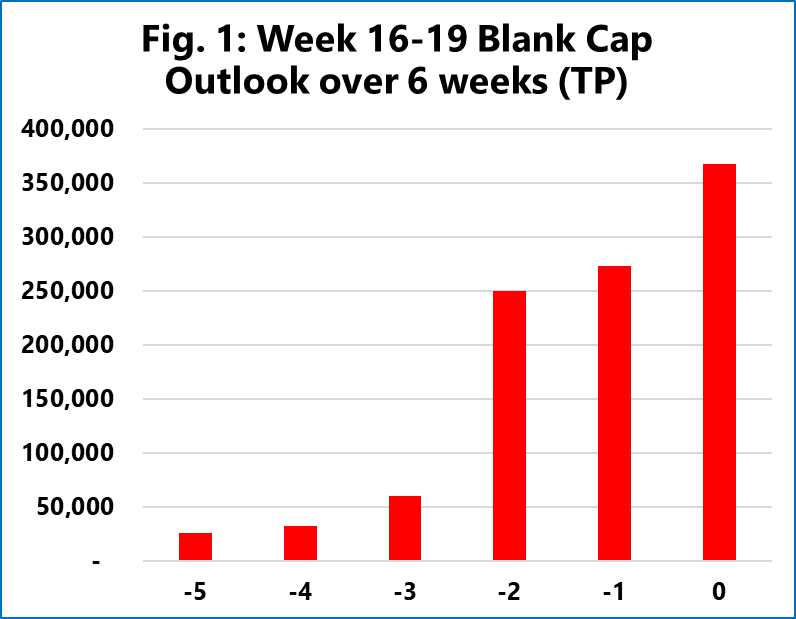The current political climate remains highly volatile, with tariffs being imposed, suspended, or revised on a near-daily basis. In response to this unpredictability, Sea-Intelligence suggests that both shipping lines and cargo owners are taking a cautious, short-term approach—adjusting immediate supply chains while delaying long-term network changes until greater stability emerges.
To assess the effects of this turbulence, Sea-Intelligence analyzed the scheduled shipping capacity over weeks 16 to 19 (this week plus the following three weeks), tracking how these projections have evolved over the past six weeks.
On the Asia–North America West Coast trade lane, capacity for weeks 16–19 was initially set at 1.43 million TEU as of week 10. This figure held steady in week 11 and dipped only slightly to 1.40 million TEU in week 12. However, in week 13, a more substantial adjustment occurred—a week-on-week decline of 8% brought capacity down to 1.29 million TEU. By week 15, it slightly recovered to 1.37 million TEU, but this still reflects a 12% reduction compared to six weeks earlier.
The Asia–North America East Coast route saw an even sharper adjustment. Scheduled capacity for weeks 16–19 dropped from 1.01 million TEU in week 10 to just 867,000 TEU by week 15—a 14% decrease over the period.
Blank sailings have surged in response to the shifting tariff landscape. Three weeks ago, only 60,000 TEU were scheduled to be blanked during weeks 16–19. Within one week, this jumped to 250,000 TEU, as carriers rapidly adjusted to new trade barriers. By week 15, blanked capacity for the same period had ballooned further to 367,800 TEU.
In contrast, the Transatlantic trade lane has remained relatively stable. This is likely due to the 90-day suspension of tariffs agreed upon by both the Trump administration and the EU, which has helped maintain confidence and consistency in scheduled capacity.
Sea-Intelligence’s findings underscore how fragile and reactive global shipping remains in the face of political and economic uncertainty, particularly when driven by tariff policy.




